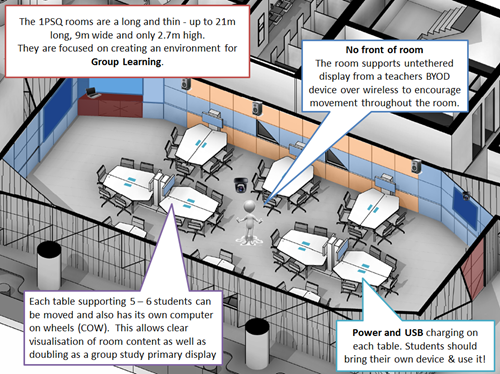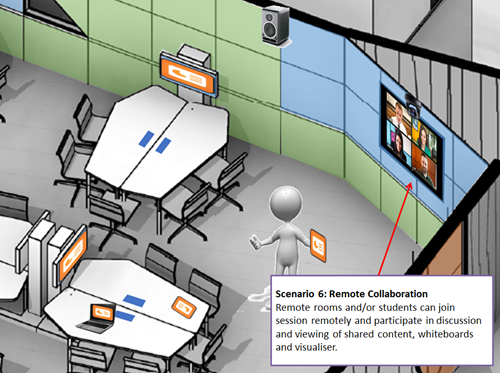- IT maintenance planned outages
- IT Service Desk
- Email and Related Services
- Western WiFi Wireless Network
- IT Contracts
- Telephones
- Computer Laboratories
- Australian Access Federation
- Service Improvements
- Staff Software Benefits
- COVID-19: ITDS Advice, Guides and Support
- Zoom
- PrintSmart
- Getting Connected: Off Campus
- Citrix
- Multi-Factor Authentication
- Return to Campus: Ready, Tech, Go
- Adobe Acrobat Sign
- Direct to Desk
- Grade Centre
- Contact Centre Project
- CloudStor Decommissioning
- SIGBOX
VF2F Scope and approach
The Virtual Face to Face project (VF2F) has three concurrent streams of activity, each focused on one of the core project aspects.
- Videoconferencing
The University's uptake of Zoom (http://westernsydney.edu.au/zoom ) has truly flown, increasing from just 50 users to over 1000 in just 6 months, and hosting more than 800 meetings and webinars in August alone. Yet Zoom for personal devices is just a beginning, with a rollout planned to upgrade the University's many video conference rooms with specialist 'Zoom friendly' equipment (the Zoom Room) over the November to February period.
Using Zoom you can present wirelessly from any seat at the table, call up to 24 other meeting rooms into a single multi-campus, multi attendee meeting at any time - on demand, or invite colleagues from around the world to chat, brainstorm, and collaborate in real time.
Zoom is more than just personal video conferencing for the University. It's a preferred way of connecting spaces and people from all campuses and beyond, at anytime, on any device.

- Future teaching spaces – the 1 Parramatta Square Design
In order to create a space that works well, both within the space and beyond, the VF2F project team has become an integral part of the design for all the future teaching spaces at 1 Parramatta Square and collaborative space planning across the University. Under guidance from the University's Academic Executive, the future teaching spaces include functionality that reduces the role of the lectern, enables problem based and small group learning, and encourages sharing of student content to others – both within and beyond the room.


Digital media library
The University uses a range of contemporary learning and teaching resources including streamed video, lecture recordings, images, music and audio, presentations, and more. It also manages a range of digital content, including marketing, information, and communications. This content is held in a variety of internal and external repositories.
In addition, we license a significant amount of content from Open University UK, requiring centralised rights management. Movement towards fully online courses will see significant growth in both internal production of digital content and the use of third party copyright content.
To effectively manage our digital content, we aim to implement a robust, centrally managed digital media library supporting innovative uses of digital resources, distribution to or consumption by consumers, and ensuring compliance with digital rights management and copyright processes.
We envisage that the digital media library will store, collate, and index content (stored both within the library and other sources), provide methods for streaming and distributing content, and enable access controls for both contributors and users.
Feedback
Do you have any questions, feedback, or suggestions?
Simply drop us an email.
Mobile options:

